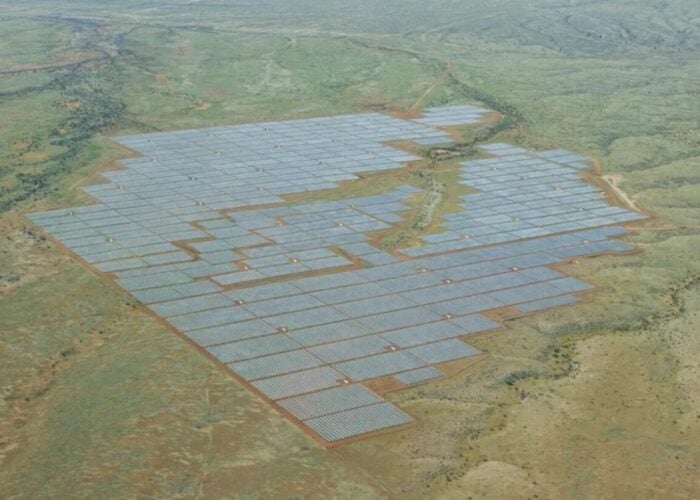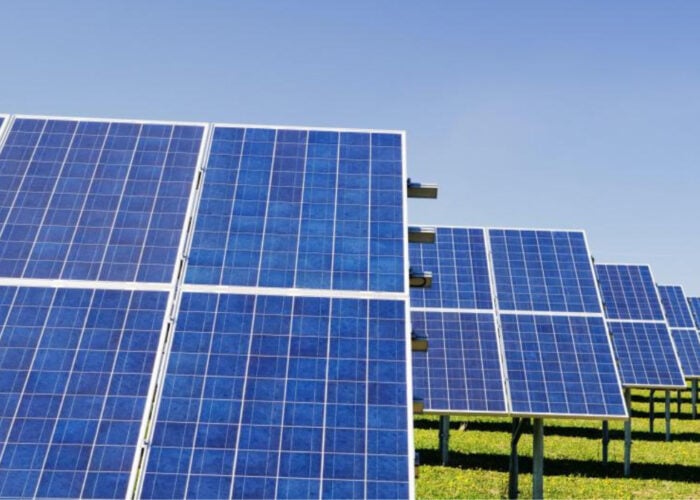
As the US tilts towards a presidential election that will very much decide the country’s path for the next four years, federal policy towards renewables and, indeed, climate action in general, hangs in the balance.
But in the absence of overarching federal policy, utilities in the US are increasingly taking matters into their own hands. Recent months have witnessed a slew of integrated resource plans (IRPs) published by utilities, each detailing ambitious plans to deploy swathes of solar and other renewables, as well as energy storage, in a bid to wrestle back control of climate action.
Unlock unlimited access for 12 whole months of distinctive global analysis
Photovoltaics International is now included.
- Regular insight and analysis of the industry’s biggest developments
- In-depth interviews with the industry’s leading figures
- Unlimited digital access to the PV Tech Power journal catalogue
- Unlimited digital access to the Photovoltaics International journal catalogue
- Access to more than 1,000 technical papers
- Discounts on Solar Media’s portfolio of events, in-person and virtual
In a dramatic policy reassessment, Dominion Energy Virginia is now calling for the development and procurement of approximately 24GW of new renewable energy and storage capacity over the next 15 years – nearly quadruple the targets outlined in its 2019 IRP.
Announced in May, the latest proposal will see Virginia’s largest utility look to add nearly 16GW of solar, 5.1GW of offshore wind and 2.7GW of energy storage. The backtrack followed the enactment a month previously of the Virginia Clean Economy Act, which called on Dominion to be carbon-free by 2045 and requires the closure of nearly all coal-fired plants in the state by the end of 2024.
“Solar and storage are going to be absolutely critical elements in order to help us achieve both our company's net-zero commitments as well as our legislative obligations,” says Katharine Bond, Dominion vice president of public policy and state affairs, adding that the renewables targets are in part due to increasing requirements as a result of the Clean Economy Act.
Virginia is a “prime example” of the bottom-up climate leadership around the US being demonstrated by cities, states, utilities and other subnational entities, Wendy Jaglom of Rocky Mountain Institute said earlier this year. “While we wait for federal leadership on climate, this is exactly the kind of expanded ambition and commitment needed to build the foundation for a comprehensive, all-in climate strategy that gets us on a path in line with the goals of the Paris Agreement,” she added.
The Dominion case is part of a growing trend among US utilities that are decarbonising their power supplies, driven by state policies that support the energy transition, cost declines in solar and battery storage technologies, and corporations looking to procure additional green energy.
In New Mexico, a bill that mandates 100% clean power by 2045 was passed last year; PNM, the state’s largest electricity provider, is targeting 100% emissions-free electricity by 2040.
Meanwhile, utilities Avista and Idaho Power are making up for the lack of policy in Idaho by both shifting to 100% clean energy by 2045. Despite the absence of state-wide renewable energy goals, the move will mean most of Idaho is being served by electric utilities intent on reaching 100% renewable energy. Idaho Power has also entered agreements to end participation in two coal plants and is exploring exiting a third — and final — coal plant.
According to the Smart Electric Power Alliance, 68% of all customer accounts in the US are now served by utilities with carbon reduction goals, including 27 utilities with ambitions to be carbon-free or achieve net-zero emissions by 2050.
The ‘compelling’ case for renewables
US utilities’ move away from coal and even natural gas-fired power stations comes as the economic case for renewables becomes undeniable.
Around three-quarters of US coal production is now more expensive than solar and wind energy in providing electricity to American households, a study published last year by renewables analysis firm Energy Innovation revealed.
In Its New Energy Outlook 2019, BloombergNEF found that wind and solar are now cheapest across more than two-thirds of the world and that by 2030, they will “undercut commissioned coal and gas almost everywhere”.
“My guess is that natural gas is going to enter this decade defined by intense competition with renewable energy whose fallen costs and rising deployment will undermine the economic case for gas as a bridge fuel”
Still, reliability issues surrounding solar and wind power mean that some utilities will rely on natural gas and coal in the future. Dominion’s latest IRP will see it develop 970MW of natural gas peaking generation to address these reliability concerns.
Alongside proposals to add up to 14GW of new solar capacity by 2038, the Tennessee Valley Authority is also eyeing anywhere from 2GW to 17GW of natural gas generation.
“The biggest concern is that US utilities are continuing to plan for billions of dollars investment in natural gas projects, even as coal plants are being retired in record numbers and renewables become more economical than ever,” Devashree Saha, senior associate at the World Resources Institute, tells PV Tech Power.
With regards to utilities’ reliability issues, Saha highlights the case of Northwestern Energy, which last year bought a 25% stake in a coal plant in Montana, citing reliability concerns. The utility noted the investment would help it meet a winter peak capacity shortfall.
Saha says the already “very compelling” case for utilities to move towards renewables will be consolidated by technological advances that improve the levelised cost of energy for solar, wind and storage. Meanwhile, as clean energy projects increase in size, it will enable utilities to leverage economies of scale to further cut costs associated with equipment, operations and maintenance.
“My guess is that natural gas is going to enter this decade defined by intense competition with renewable energy whose fallen costs and rising deployment will undermine the economic case for gas as a bridge fuel,” adds Saha.
This is backed up by a report from Rocky Mountain Institute (RMI) that warns of the “significant risk” of proceeding with planned investment in new gas-fired power plants due to the resulting stranded costs. As of September 2019, there was an estimated US$90 billion of planned investment in new gas-fired power plants and over US$30 billion in proposed gas pipelines.
By the mid-2030s, as clean energy prices continue to fall, building a new portfolio of clean energy resources will become less costly than continuing to pay the operating costs of a combined-cycle gas plant, the report notes, and such a portfolio will provide the same level of energy, capacity and reliability services.
This is an extract of an article first published in Volume 24 of PV Tech Power. The full article can be read here, or in the full digital copy of PV Tech Power 24, which can be downloaded via the PV Tech Store here






